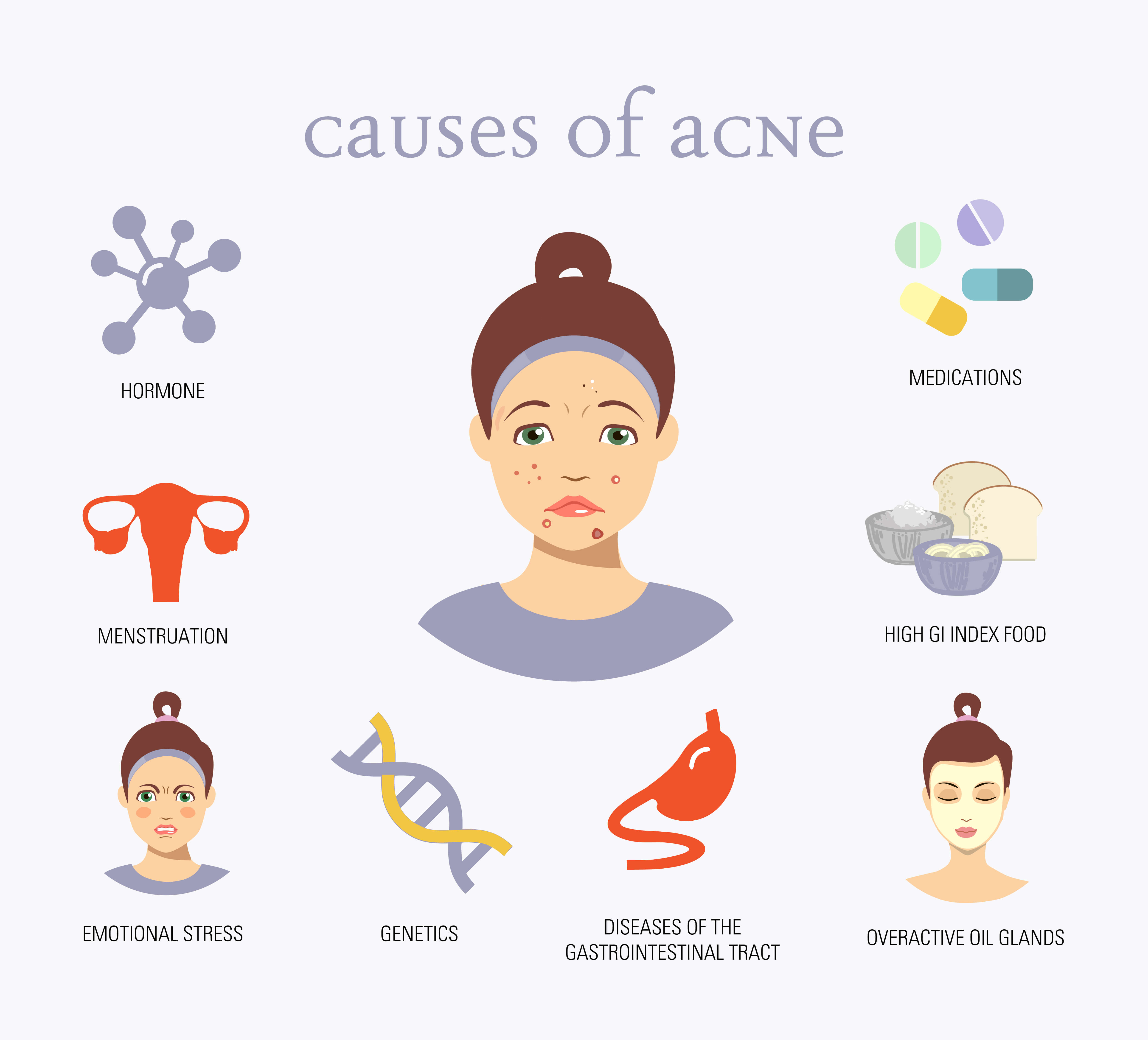/assets/images/provider/photos/2635628.jpg)
Though acne is the scourge of many a teenager, not everyone develops it during puberty. Some people never develop it, while others have an adult-onset form. If you’re in the latter category, you may be wondering why you’re developing acne now, as an adult.
At Ross Dermatology, Dr. Kim Ross, Dr. Ronald Davis, and their team treat acne in teens and adults at their offices in San Antonio, Seguin, and LaVernia, Texas. If you’re someone who’s just now developing acne as an adult, here are the reasons why.
Acne causes

Acne is a common skin condition that produces a variety of blemishes when hair follicles become clogged with oil, dead skin cells, and bacteria. The blemishes are persistent, heal slowly, and pop up again just as soon as you thought you were done with them. If you have severe acne and don’t treat it, you risk permanent scarring and emotional distress.
Acne is most associated with the hormone surge that characterizes puberty, but some adults continue to experience breakouts well into their 50s. It’s even possible to get it for the first time as an adult.
Adult-onset acne is most common among perimenopausal women because of the fluctuating hormone levels during that period. Women also experience hormonal changes during their menstrual cycles, during pregnancy, and when starting or discontinuing birth control pills; all of these make them more prone to the condition.
Adult-onset acne can also be due to:
Stress
When we’re stressed, our bodies produce more androgen hormones. These stimulate the oil glands and hair follicles in the skin, leading to acne breakouts.
Hair and skin care products
Many products, such as moisturizers, sunscreens, and facial cleansers, contain ingredients that increase oil production instead of decreasing it. It pays to be fussy when selecting products, making sure all are oil-free.
Medication side effects
Medications aren’t designed to cause acne, but they may trigger it as a side effect. If you think your acne falls in this category, talk with your doctor to see if you can switch to a similar drug without this side effect. If not, Ross Dermatology can offer you a number of treatment options to see you through.
Treatments for acne
Medications are the first line of defense against acne, no matter at which age you develop it. Both over-the-counter (OTC) and prescription medications work by reducing oil production and follicle swelling or by treating the underlying bacterial infection. It's typical, though, not to see any results for 4-8 weeks, and it can take months or even years for your acne to clear up completely.
Common topical medications include:
Retinoids and retinoid-like formulations
Retinoids come in gels, creams, and lotions, and they’re useful for moderate acne because they prevent hair follicle clogging. Don’t apply tretinoin (a prescription retinoid) at the same time as topical benzoyl peroxide, a common OTC remedy, because they interact with each other.
Antibiotics
Topical antibiotics kill bacteria living on the skin, reducing redness and inflammation in the process. These antibiotics are commonly combined with benzoyl peroxide, which then reduces the risk of developing antibiotic resistance. Topical antibiotics by themselves generally aren't effective.
Azelaic acid and salicylic acid
Azelaic acid, produced by a type of yeast, has antibacterial properties. A 20% azelaic acid cream or gel used twice daily may prove effective. Salicylic acid, found in both wash-off and leave-on formulations, helps prevent clogged hair follicles.
Common oral medications include antibiotics like tetracycline, which need to be combined with a product like benzoyl peroxide; combined oral contraceptives; anti-androgens; and isotretinoin, a derivative of vitamin A.
If you’re an adult and are facing your first bout with acne, Ross Dermatology can help return your skin to its unblemished state. To learn more, or to schedule a consultation, call us at any of our locations, or book online today. We can help.
Home REMEDIES
This is the regimen that our doctor has prescribed for you. It may consist of acne creams, washes, pills or all three. There is no shortage of effective acne treatments. Treating acne requires patience (you must think in terms of months, NOT days or weeks). But with time, your skin will clear. For really stubborn acne we use Accutane This drug also requires a little extra effort (monthly blood tests etc…), but the results are dramatic and consistent (it literally “wipes out” acne)
Professional Dermatologist Acne Treatment Options (In-Office)
Acne Peels
Peels (dissolve the “plugs”). There are two types of facial peels for acne:
1) Chemical peels – such as salicyclic acid peels
2) Physical peels – such as microdermabrasion
Both have the same goal – exfoliating skin: especially those sticky skin cells that block the hair follicles and cause your acne. The choice between salicylic acid and microdermabrasion depends on your skin type and in some people they can even be used together, for a greater effect!
Acne Facial Treatments
The “Acne Tune-Up” Facial (remove the “plugs”)
Your medicines will prevent new comedones, but eventually, some of these plugs will need to be mechanically removed one by one. This can only be achieved by our estheticians. The “tune-up” includes steaming the skin, using acid peels and/or microdermabrasion to soften the plugs blocking your hair follicles, careful extractions to remove the plugs, and soothing masks to decrease redness.
Acne Injections
Cortisone Injections (shrink the deep “pimples”, prevent scarring)
A cortisone injection is the only treatment that is going to make that big red “underground” zit go away in 24 hours instead of three weeks. If you have an “emergency zit”, and need an injection, please call the office and we will get you in that day for a quick visit.